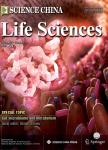Interactions between central nervous system and peripheral metabolic organs
Interactions between central nervous system and peripheral metabolic organs作者机构:Institute for Immunologyand Department of Basic Medical SciencesSchool of MedicineTsinghua UniversityBeijing 100084China Tsinghua-Peking Center for Life SciencesBeijing 100084China Beijing Key Laboratory for Immunological Research on Chronic DiseasesBeijing 100084China The Brain Cognition and Brain Disease InstituteShenzhen Institute of Advanced TechnologyChinese Academy of SciencesShenzhen-Hong Kong Institute of Brain Science-Shenzhen Fundamental Research InstitutionsShenzhen 518055China School of Life Science and TechnologyShanghaiTech UniversityShanghai 201210China Department of HematologyThe First Affiliated Hospital of USTCHefei National Laboratory for Physical Sciences at the MicroscaleSchool of Life SciencesDivision of Life Sciences and MedicineUniversity of Science and Technology of ChinaHefei 230026China National Institute of Biological SciencesBeijing 102206China Tsinghua Institute of Multidisciplinary Biomedical ResearchTsinghua UniversityBeijing 100084China Department of NeurologyThe First Affiliated Hospital of Chongqing Medical UniversityChongqing 400042China Institute of Neuroscience and the Collaborative Innovation Center for Brain ScienceChongqing Medical UniversityChongqing 400016China Chongqing Key Laboratory of NeurobiologyChongqing 400016China
出 版 物:《Science China(Life Sciences)》 (中国科学(生命科学英文版))
年 卷 期:2022年第65卷第10期
页 面:1929-1958页
核心收录:
学科分类:0710[理学-生物学] 07[理学] 071006[理学-神经生物学]
基 金:supported by the National Natural Science Foundation of China (31822026,31822018,31770936,82072489,32122039) the National Key R&D Program of China (2017YFA0205903,2017YFA0505800,2021ZD020390) the Key Research Program of Frontier Sciences of Chinese Academy of Sciences (QYZDB-SSW-SMC056) Beijing Natural Science Foundation (5222010) the Tsinghua University(School of Medicine)-Xiamen Changgeng Hospital Co.Ltd.Joint Research Center for Anaphylactic Disease。
主 题:central nervous system peripheral organs adipose tissues bone metabolism gut microbiota
摘 要:According to Descartes,minds and bodies are distinct kinds of “substance,and they cannot have causal interactions.However,in neuroscience,the two-way interaction between the brain and peripheral organs is an emerging field of research.Several lines of evidence highlight the importance of such interactions.For example,the peripheral metabolic systems are overwhelmingly regulated by the mind(brain),and anxiety and depression greatly affect the functioning of these systems.Also,psychological stress can cause a variety of physical symptoms,such as bone loss.Moreover,the gut microbiota appears to play a key role in neuropsychiatric and neurodegenerative diseases.Mechanistically,as the command center of the body,the brain can regulate our internal organs and glands through the autonomic nervous system and neuroendocrine system,although it is generally considered to be outside the realm of voluntary control.The autonomic nervous system itself can be further subdivided into the sympathetic and parasympathetic systems.The sympathetic division functions a bit like the accelerator pedal on a car,and the parasympathetic division functions as the brake.The high center of the autonomic nervous system and the neuroendocrine system is the hypothalamus,which contains several subnuclei that control several basic physiological functions,such as the digestion of food and regulation of body temperature.Also,numerous peripheral signals contribute to the regulation of brain functions.Gastrointestinal(GI) hormones,insulin,and leptin are transported into the brain,where they regulate innate behaviors such as feeding,and they are also involved in emotional and cognitive functions.The brain can recognize peripheral inflammatory cytokines and induce a transient syndrome called sick behavior(SB),characterized by fatigue,reduced physical and social activity,and cognitive impairment.In summary,knowledge of the biological basis of the interactions between the central nervous system and peripheral organs will promote the full understanding of how our body works and the rational treatment of disorders.Thus,we summarize current development in our understanding of five types of central-peripheral interactions,including neural control of adipose tissues,energy expenditure,bone metabolism,feeding involving the brain-gut axis and gut microbiota.These interactions are essential for maintaining vital bodily functions,which result in homeostasis,i.e.,a natural balance in the body’s systems.



